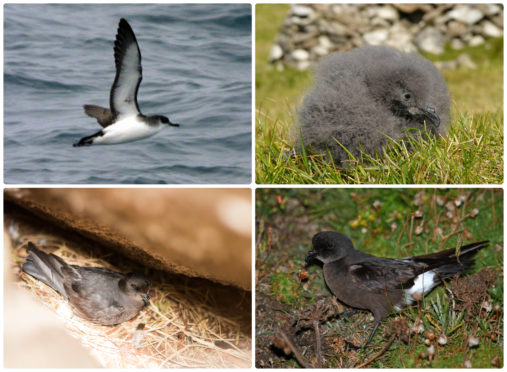Experts have launched an innovative project to allow for a better understanding of the behavioural habits of seabirds on the west coast.
A contract advertised by the Scottish Government has now been awarded to tag and track the Manx Shearwater, European Storm Petrel and Leach’s Storm Petrel species.
The joint initiative between RSPB Scotland and Marine Scotland has been funded by a grant from the European Maritime and Fisheries Fund.
The British Trust for Ornithology is also involved in the project by providing training on how to tag great black-backed gulls using a special kind of harness.
The total value of the contract is £130,233 with different remote areas identified along the west coast to catch a glimpse into the life of some of Scotland’s rich wildlife.
The breeding of Manx Shearwater on Rum will be monitored, with focus on the European Storm Petrel taking place on the Treshnish Islands and Priest Island to gather data on their distribution and habitat use.
The remote St Kilda and North Rona will take centre stage in order to track Leach’s Storm Petrel.
All of the data gathered is hoped to provide a greater understanding of species movements and the potential exposure to pressures they may face at sea.
Dr Mark Bolton, Principal Conservation Scientist for RSPB Scotland, said: “This work provides an exciting and important opportunity to discover the locations of the marine feeding areas of Leach’s and European storm petrels breeding at the largest colonies in West Scotland, which will inform future management for these priority species”.
A Scottish Government spokesman added: “Scotland hosts internationally important populations of seabirds and knowledge on how they use the marine environment is needed to optimise their conservation prospects and ensure the sustainable management of our seas.
“This study will track the at-sea movements of Leach’s storm petrel and the European storm petrel for which there is currently very limited data available in Scotland, and virtually none on the west coast.
“Recent miniaturisation of electronic tagging devices like GPS tags now allows these seabirds – which are among our lightest seabird species at just 25-45g – to be tracked at sea.”
Work on the project began in late 2019, however, due to current restrictions under the Covid-19 outbreak, fieldwork has been delayed until next summer.










